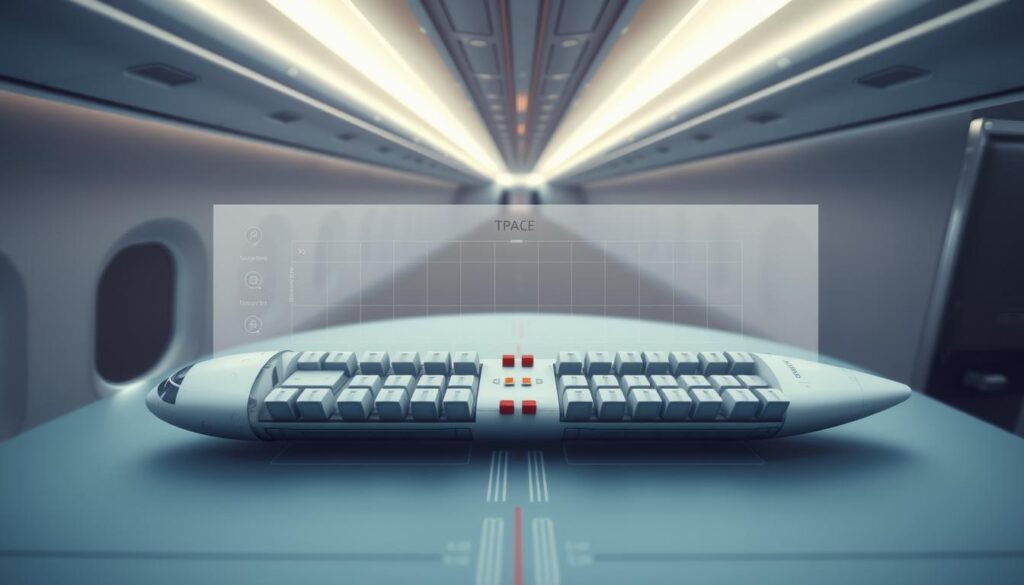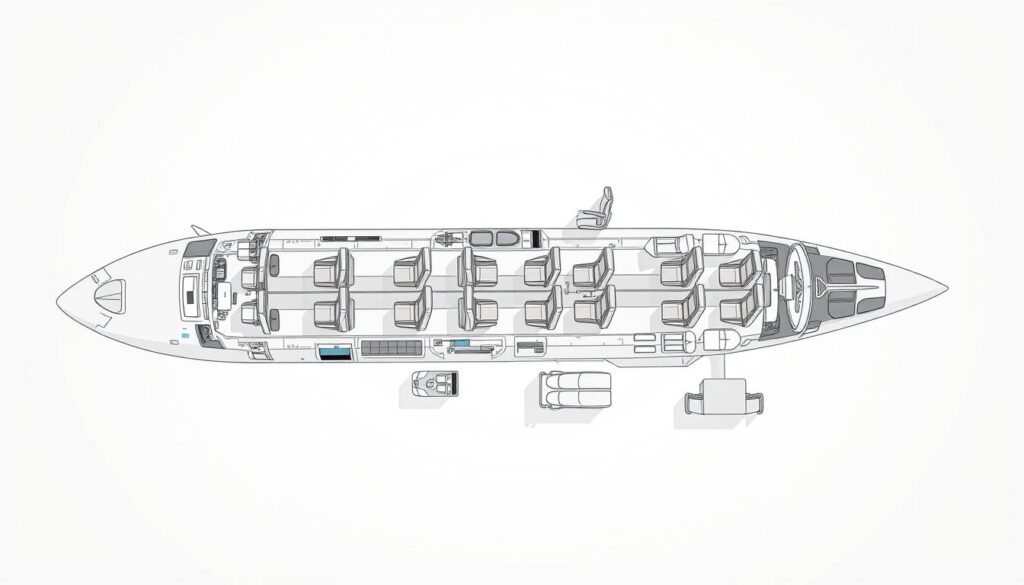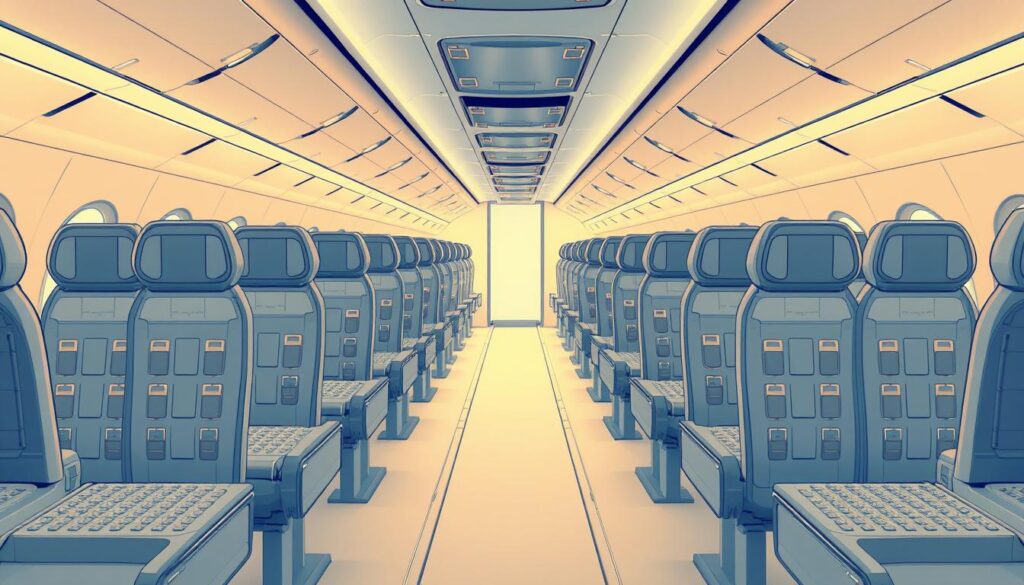Understanding Airline Seat Maps: Picking the Best Seat for You
When checking in online for a flight, you’re often presented with a visual representation of the aircraft’s seating configuration. This visual tool, known as an airline seat map, allows you to choose your preferred seat or understand where you’ll be sitting.
Choosing the right seat can significantly enhance your flying experience. Whether you’re looking for more legroom, a window view, or proximity to the lavatories, knowing how to read an airline seat map is crucial for picking the best seat for you.
In this article, we’ll explore the importance of airline seat maps and provide tips on how to read them effectively, ensuring you’re well-equipped to make informed decisions when selecting your seat on your next flight.
What Are Airline Seat Maps and Why They Matter
When it comes to flying, knowing how to read airline seat maps can make a significant difference. Airline seat maps are diagrams that illustrate the seating configuration of an aircraft. These maps are crucial for passengers to understand the layout of their flight, including the location of their seat, lavatories, galleys, and other important features.
The orientation of airline seat maps is always forward-facing, meaning the top of the map represents the front of the plane or cabin, and the bottom represents the rear. It’s also important to note that seat maps are not usually to scale, so a large aisle or galley area on the map may not accurately represent the actual configuration.

Understanding airline seat maps enables passengers to make informed decisions when selecting their seat, avoiding potential discomfort or disturbance. By familiarizing themselves with the seat map, travelers can choose a seat that best suits their needs, enhancing their overall flying experience.
How to Access and Read Airline Seat Maps
To get the best seat on your flight, you need to know how to navigate airline seat maps. Most airlines provide seat maps on their website or mobile app, allowing passengers to view the seating configuration and select their preferred seat.
When accessing the seat map, look for important features such as the location of lavatories, galleys, and exit rows. These can impact the comfort and safety of your flight. Understanding the layout of the aircraft is key to making an informed decision when selecting your seat.
Online Check-in and Seat Selection
Online check-in is a convenient way to secure your preferred seat. During online check-in, you can access the seat map and choose from available seats. Some airlines may charge extra for premium seats, such as those with more legroom or located near the front of the aircraft.
To make the most of online check-in and seat selection, be sure to check the seat map carefully and choose a seat that meets your needs. Whether you’re looking for extra legroom or a quieter spot, understanding how to read airline seat maps can help you pick the best seat for you.
Understanding Different Types of Aircraft Seating
Understanding the different types of aircraft seating is essential for travelers to make informed decisions about their flight experience. Aircraft seating configurations can significantly vary across different airlines and aircraft types, impacting passenger comfort and amenities.
Economy Class Seating: Economy seats are typically configured in a 3-3 or 3-4-3 layout on narrow-body and wide-body aircraft, respectively. For instance, on narrow-body aircraft, you might find a 2-3 configuration, while wide-body aircraft often have a 3-3-3 or 3-4-3 configuration. The seat pitch and width can also vary, affecting overall comfort.
Premium Economy, Business, and First Class: Premium economy, business, and first class offer more luxurious experiences with varying configurations. Business-class cabins, for example, can have lie-flat beds and are often configured in a 2-2-2 or 1-2-1 layout, providing more privacy and comfort. First class may offer even more exclusive amenities and private suites.

The configuration of these higher classes can differ significantly between airlines, with some offering more spacious seating and advanced entertainment systems. Understanding these differences is key to selecting the best seat for your needs.
By familiarizing yourself with the various aircraft seating configurations, you can better navigate airline seat maps and choose a seat that enhances your flying experience. Whether you prioritize comfort, amenities, or cost, knowing what to expect can make a significant difference.
Understanding Airline Seat Maps: Picking the Best Seat for You
The key to a pleasant flight lies in understanding how to pick the best seat for your needs. With various factors to consider, from the location of lavatories and galleys to exit rows, making an informed decision can significantly enhance your travel experience.
For instance, passengers who value peace and quiet may prefer seats away from high-traffic areas like lavatories and galley sections. On the other hand, travelers with a fear of flying might find comfort in seats located over the wing, which is often considered the most stable part of the plane.
Consider Your Travel Needs
Different types of travelers have unique needs. For example, parents traveling with infants often prefer bulkhead seats because they provide more legroom and a safe place to install baby bassinets. However, these seats can also have drawbacks, such as limited recline and being close to the galley or lavatories.

When selecting your seat, it’s also crucial to consider the aircraft’s layout. Understanding the configuration of your plane, including the location of exit rows, can help you make a more informed decision. Exit rows often offer more legroom, but passengers seated here are also expected to assist in emergency situations.
By taking the time to study airline seat maps and understand the characteristics of different seats, you can choose a seat that meets your needs, enhancing your overall flying experience. Whether you’re looking for more legroom, peace and quiet, or a smoother ride, picking the best seat for you is key to a more enjoyable flight.
Strategic Timing for Seat Selection
The key to securing your preferred airline seat lies in understanding the strategic timing of seat selection. Airlines often allow passengers to select their seat at check-in or during booking, and some even offer the option to purchase seat selection fees.
Selecting your seat during booking can be beneficial as it gives you a wider range of options. However, airlines often release more seats for selection during online check-in, usually 24 hours before the flight. Being aware of this timeline can help you plan your seat selection strategy.
It’s also important to consider the impact of seat selection fees. Some airlines charge extra for seat selection, while others offer it for free. Understanding these fees can help you make an informed decision about when to select your seat. By timing your seat selection strategically, you can avoid unnecessary fees and secure your preferred seat.
In conclusion, understanding the strategic timing of seat selection is crucial for getting the best seat on your flight. By knowing when to select your seat, you can increase your chances of getting your preferred seat and make your flying experience more enjoyable.
Special Seating Considerations for Different Travelers
For many travelers, the key to a comfortable and enjoyable flight lies in selecting a seat that meets their individual needs. Different travelers have unique preferences and requirements when it comes to airline seating.
Nervous fliers, for instance, may find solace in a seat located over the wing, as this tends to be the most stable part of the aircraft, potentially reducing anxiety during turbulence. On the other hand, parents traveling with infants often prefer bulkhead seats because they provide more legroom and a flat surface for bassinets, making it easier to care for their little ones during the flight.
Travelers with tight connections may prioritize seats near the front of the cabin to ensure a quicker exit upon arrival. This strategic seating can make a significant difference for those with short layovers or tight schedules.
Tailoring Your Seat Choice to Your Needs
Understanding the specific needs of different traveler types is crucial for making informed seat selections. By considering factors such as comfort, convenience, and personal preferences, passengers can enhance their overall flying experience.
Whether you’re a nervous flyer seeking stability, a parent looking for extra space, or a traveler with a tight connection, being mindful of special seating considerations can greatly impact your journey. By picking the best seat for you, you can look forward to a more enjoyable and stress-free flight.
Conclusion
Understanding airline seat maps is crucial for picking the best seat for your next flight. By reading the seat map and considering your individual needs, you can make informed decisions when selecting your seat.
With the knowledge gained from this article, you’re now equipped to navigate airline seat maps with confidence. Whether you’re a nervous flier, a parent with an infant, or a traveler with a tight connection, airline seat maps can help you choose the best seat for your needs.
By applying the tips and guidance provided, you can ensure a more comfortable and enjoyable flying experience. So, next time you’re booking a flight, take a closer look at the airline seat map and pick the best seat for you.
